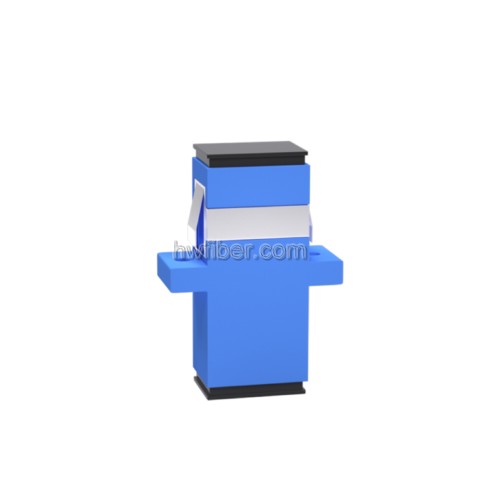Fiber optic coupler, also known as splitter, connectors, adapters, and flanges, are components used to achieve optical signal branching/combining, or to extend fiber optic links. They belong to the field of passive optical components and are applied in telecommunications networks, cable TV networks, user return systems, and regional networks.
Fiber optic couplers can be divided into:
Standard coupler (belonging to waveguide type, double branch, unit 1 × 2, which means the optical signal is divided into two powers)
Direct Coupler (connects two fibers of the same or different types of fiber interfaces to extend the fiber optic link)
Star/Tree Coupler
And wavelength multiplexer (WDM), if the wavelength belongs to high-density separation, i.e. the wavelength spacing is narrow, it belongs to DWDM
There are three production methods: sintering, Micro Optics, and Wave Guide, with sintering being the majority (about 90%).
The production method of sintering involves burning, melting, and stretching two optical fibers together to aggregate the core and achieve optical coupling. The most important production equipment is the fiber fusion splicer, which is also an important step. Although some of the important steps can be manufactured by machines, people still need to work to inspect and package after sintering, so the labor cost is about 10-15%. Moreover, manual inspection and packaging must ensure consistency in quality, which is also a must be overcome during mass production. However, the technical difficulty is not as high as DWDM modules and optical active components. Therefore, most manufacturers who want to enter the fiber industry in the early stage will start with optical couplers, with a gross profit of 20-30%.

According to the different types of coupled optical fibers, there are the following classifications:
The SC fiber coupler is applied to the SC fiber interface, which looks very similar to the RJ-45 interface, but the SC interface appears flatter. The obvious difference is the contact inside. If it is 8 thin copper contacts, it is the RJ-45 interface, and if it is a copper pillar, it is the SC fiber interface.
LC fiber couplers are used for LC fiber interfaces and connectors for connecting SFP modules. They are made using a modular jack (RJ) latch mechanism that is easy to operate. (commonly used in routers)
FC fiber optic couplers are applied to FC fiber optic interfaces, with external reinforcement using metal sleeves and fastening using screw buckles. Usually used on the ODF side (most commonly on distribution frames)
ST fiber optic couplers are applied to ST fiber optic interfaces and are commonly used in fiber optic distribution frames. The outer shell is circular and fastened with screw buckles.
Fiber optic coupler is a device that allows for detachable (movable) connections between optical fibers. It precisely connects the two end faces of the optical fiber to maximize the coupling of the optical energy output by the transmitting fiber to the receiving fiber, and to intervene in the optical link to minimize the impact on the system.
For waveguide type fiber couplers, it is generally a component with Y-shaped branches, and the optical signal input from a single fiber can be divided equally by it. When the opening angle of the coupler branch increases, the amount of light leaking into the cladding will increase, resulting in excess loss. Therefore, the opening angle is generally within 30 °, so the length of the waveguide type fiber coupler cannot be too short.
The role of fiber optic couplers
A optocoupler consists of two parts: a light source and a light receiver. Assemble the light source and receiver in the same sealed shell, and isolate them with transparent insulators. The pin of the luminous source is the input terminal, and the pin of the receiver is the output terminal. Common luminous sources are light-emitting diodes, and the receiver is a photosensitive diode, a photosensitive transistor, and so on.
The function of fiber optic couplers is to achieve optical signal splitting/combining, or to be used as components for extending fiber optic links. They belong to the field of passive optical components and are applied in telecommunications networks, cable TV networks, user loop systems, and regional networks.
The main functions are:
Convert optical signals into electrical signals
Coupling multi-mode signals into single-mode signals
Make the cross-sectional fiber holes of the two fiber optic connectors conductive
Connect two sets of optical signals to each other
Contact: Ms. Serena Shen
Phone: +86 18658259895
E-mail: sales@hwfiber.com
Whatsapp:+86 18658259895
Add: No. 28 Yinfu Road, Danxi Street, Xiangshan County, Ningbo City, Zhejiang
We chat
